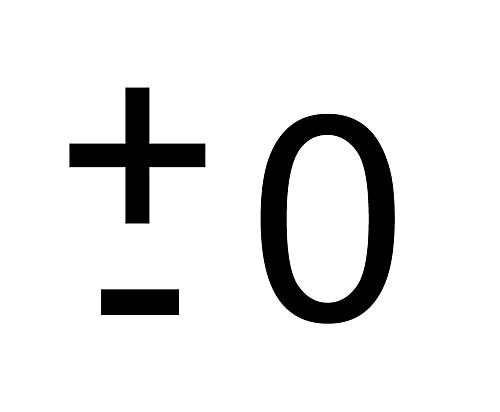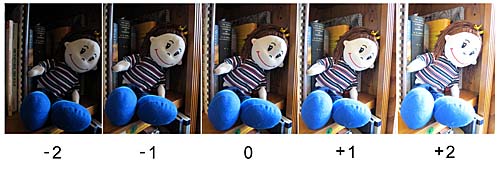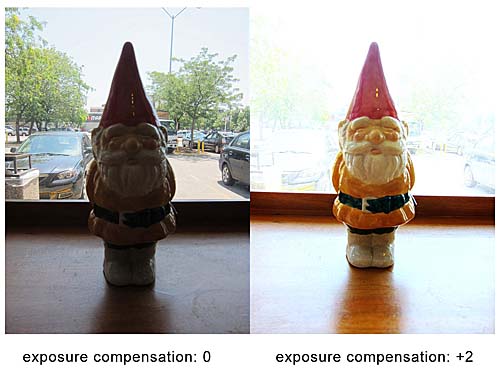- Undiscovered Options: Exposure Compensation and White Balance
- Exposure Compensation
- White Balance
- Make It Happen!
Exposure Compensation
Often represented with an icon similar to that shown in Figure 1, exposure compensation allows you to force the camera to choose different exposure settings than it normally would—resulting in either a brighter or darker image. Exactly how much brighter or darker is entirely up to you.

Figure 1 This icon represents the exposure compensation function on most cameras.
Exposure compensation is commonly measured on a scale from -2 (two stops darker) to +2 (two stops brighter), with 0 representing a neutral exposure (what the camera believes is correct). Typically, you can choose any setting between -2 and +2, in increments of one-third of a stop. (Light is measured in stops similar to how you might measure flour in cups.)
The settings are usually depicted along a lateral scale, as seen in Figure 2, or numerically, as seen in Figure 3. In either case, a setting of 0 is neutral, meaning that no exposure compensation will take place. When exposure compensation is set to 0, the function is essentially turned off.

Figure 2 On some camera models, exposure compensation is displayed in a linear scale ranging from -2 to +2, as seen here.

Figure 3 Some cameras, primarily compact point-and-shoots, display exposure compensation numerically, as seen here.
Figure 4 shows a series of images captured in the same scene, each with a different exposure compensation setting (as noted below each frame). Notice that the image with exposure compensation setting of -2 is much darker than the image captured with exposure compensation set to 0. Similarly, the frame with exposure compensation of +2 is much brighter than the image with exposure compensation set to +1.

Figure 4 As the exposure compensation setting changes from -2 to +2, the exposure becomes brighter. A setting of 0 represents what the camera believes to be a proper exposure.
Step-by-Step Exposure Compensation
Using exposure compensation is a piece of cake. Just follow these simple steps:
- Assess the problem. After taking a photo that wasn't what you hoped to get, ask yourself whether the photo appears too bright or too dark.
- Adjust the exposure. Exposure compensation settings are often accessed via a button, or possibly within the camera's menu system. Check your user guide for specifics to find your camera's settings. Then take a guess at the necessary adjustment. If you determined that your original photo was too bright, you might start with an exposure compensation setting of -1 to darken the image. If the original photo was too dark, you can try brightening it with an exposure compensation setting of +1. The further from 0 you go in either direction (plus or minus), the more dramatically different the resulting photo will be from the original.
- Take another photo. Most cameras preview the results for you right on the LCD screen before you even take the photo, so you should be able to see the impact your chosen exposure compensation settings are having on the photo you're about to take.
- Adjust as necessary. If the exposure compensation adjustment you made in step 2 wasn't dramatic enough (or perhaps was overly dramatic), adjust the settings as needed and take another photo. Repeat until you get the desired results.
When to Use Exposure Compensation
Use exposure compensation whenever you feel that your photos are too bright or too dark. Just make sure that you're in a shooting mode other than "auto" or "manual"; otherwise, the exposure compensation function will likely be inaccessible.
Exposure compensation is especially useful in backlit situations; that is, anytime the area behind your subject is brighter than the subject, such as when you're trying to capture a person in front of a bright window. Backlit scenes tend to trick the camera into taking photos that are too dark. For an example, take a look at Figure 5. The image on the left shows what was captured in "auto" mode, without the use of exposure compensation—reflecting what the camera believed to be a correct exposure. Compare that shot to the image on the right, captured in "program" mode with exposure compensation set to +2. Because the bright window was behind the subject (in this case, a porcelain gnome), the camera mistakenly chose an exposure based on the bright light outside, rather than on the light from the inside that was actually illuminating the subject.

Figure 5 A backlit situation like this (with large amounts of light coming from behind the subject) is a perfect opportunity to use exposure compensation.
As Figure 5 shows, the results of exposure compensation can be quite dramatic! Can you believe that you've had this power all along? Pat yourself on the back for learning this feature, and get ready to check out another cool function—white balance!